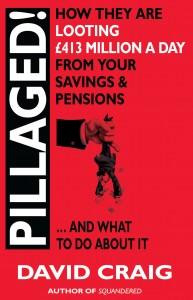The establishment’s response to the catastrophic scandal at the Mid-Staffordshire NHS trust has been depressingly predictable. The chief executive, Martin Yeates, was allowed to retire with a �400,000 pay-off and didn’t even turn up at the public enquiry as he claimed to be too ill. The head of the trust, Cynthia Bower, was promoted to run the Care Quality Commission (responsible for care throughout the NHS) and the overall bureaucrat at the time, David Nicholson,�was promoted to run the NHS.
And now that the official report has been published, the main recommendation seems to be – hire more useless, self-serving, overpaid, overpensioned bureaucrats. But let’s remember the massive increase in NHS bureaucrats which happened under Blair’s and Brown’s New Labour around the time Mr Yeates was killing off about 1,200 patients:
In 2001 the National Patients Safety Agency (NPSA) was established to: �improve patient safety in the NHS� and by 2009 it had amassed 292 staff and an annual budget of almost �30 million. Unfortunately, after spending well over �100m of our money on paperwork and their own comfort, they still had no real idea of the number of unnecessary deaths in hospitals each year. One independent study even suggested that the NPSA was only picking up about�5% of incidents where avoidable harm was done to patients. The situation was so bad that in 2006 the Public Accounts Committee denounced the NPSA as being �dysfunctional� and �not value for money�.
In 2002, the Nursing and Midwifery Council (NMC) was set up in order �to protect the public by ensuring that nurses and midwives provide high standards of care�. Its motto is also inspiring: �protecting the public through professional standards�. The NMC�increased its budget from about �14.9m to �34m in the first seven years of its existence and now employs about 220 staff. Perhaps a little worrying for people in hospital is the fact that the NMC, which is responsible for ensuring we receive quality nursing, takes no disciplinary action against nurses in around�90% of the complaints it receives � most are rejected as �trivial�.
In 2002 we were also fortunate to be given the NHS Confederation. It calls itself �The voice of NHS Leadership� and its aim is to �help members improve health and patient care�.�Its budget�rose by a factor of five from a tiny �5.3m in its first year to a much more impressive �29m. It too seems to be in the business of destroying innumerable forests to produce mountains of reports. Some could be useful such as Managing Excellence in the NHS and Bringing Leaders into the NHS. Some like Why We Need Fewer Hospital Beds might seem a little worrying to those of us who know that hospital over-crowding is one of the major causes of hospital-acquired infections.
In 2003 we got the Health Protection Agency (HPA) to look after our well-being. Its aim was �to provide an integrated approach to protecting UK public health�. The HPA has certainly been effective at spending taxpayers� money. Its total costs increased by fifty per cent from �180m in 2004 to �270m and the number of staff went up from 2,518 to 3,160. The HPA produces a vast amount of presumably valuable literature about almost any medical topic you could think of including lots of guidance about reducing hospital-acquired infections such as MRSA and C Diff. In the meantime, these infections have claimed over 20,000 British lives. The death toll would have been less than 400 had these victims been living in countries like Holland, Denmark orSweden. In the same year, we also were given the Medicines and Healthcare Products Regulatory authority. It has eighty staff and an �80m budget, yet EU regulations should mean that medicines tested and approved in one member state should be available throughout the whole EU without any need for further approvals.
The following year, 2004, was a bit of a bumper year for new healthcare regulators with no fewer than three being established. In January 2004, we were blessed by the appearance of Monitor. Its mission is: �To operate a transparent and effective regulatory framework that incentivises NHS foundation trusts to be professionally managed and financially strong and capable of delivering innovative services that respond to patients and commissioners�. Its chairman earned over �215,000 in 2008-09 (almost �20,000 more than the Prime Minister) and it spends about �12.5m of our money a year supposedly regulating NHS foundation trusts so they provide better healthcare to us. Yet events at the Mid-Staffordshire NHS Trust which was granted trust status in spite of the unnecessary deaths of more than a thousand patients might make people wonder what Monitor is up to. At the time of the Mid-Staffordshire scandal, the head of health at Unison commented: �It seems unbelievable now that despite a history of clinical and staffing problems and failures at Mid Staffordshire, the trust was awarded foundation status in February last year. It is time Monitor the regulator was held to account�.
2004 also gave us the Healthcare Commission (HC). The HC�s motto is �Inspecting, improving, informing� and it has an inspiring mission statement for its�more than 500�staff: �The Healthcare Commission is committed to driving improvement in the quality of both the NHS and independent healthcare services and to making sure that patients are at the centre of everything we do�. The HC cost us about �70m a year. Then in the same year, perhaps to score a hat-trick, the government dreamt up the Commission for Social Care Inspection which by 2008 grew to 2,335 staff and a budget of �164m. This new organisation only lasted about four years as it was rolled into the Care Quality Commission (CQC)�in 2009. �
The�CQC�combined several existing regulators such as the Healthcare Commission, the Mental Health Act Commission and the Commission for Social Care Inspection. Its aim is: �To make sure better care is provided for everyone, whether that�s in hospital, in care homes, in people�s own homes, or elsewhere�. Had any of the other bureaucracies done their job properly, this new regulator would not have been necessary. Moreover there is only one certainty with today�s new generation of expensive, self-serving, regulatory-captured regulators � this new body will be as ludicrously expensive and as laughably ineffectual as all the others.
In its 1997 election manifesto New Labour promised to reduce administrative costs in the NHS, �The key is to root out unnecessary administrative cost and to spend money on the right things � frontline care�. Yet we now pay over �450m a year more for regulators than we did�15 years ago.













